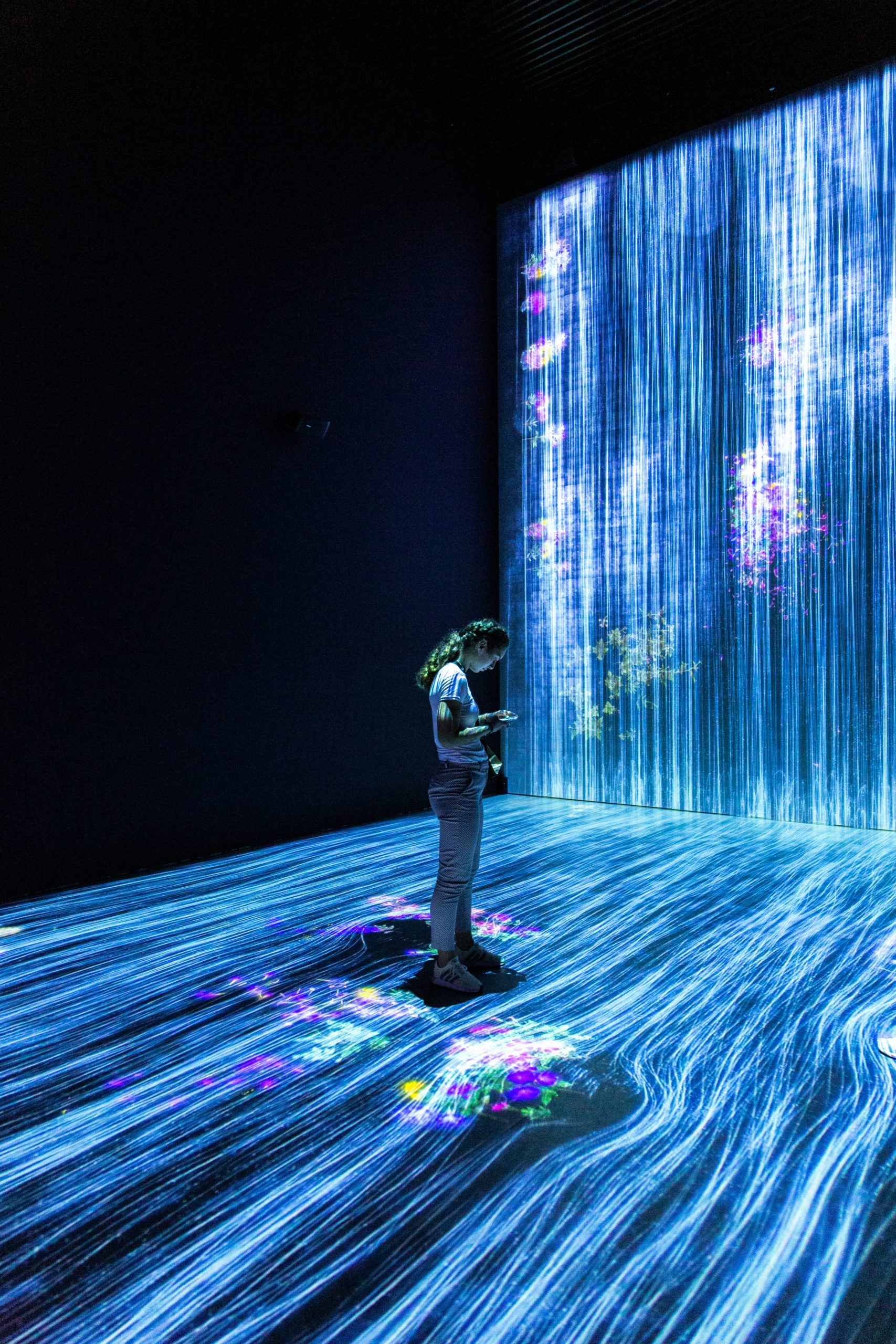

🔬 Original article by Azfar Adib, who is currently pursuing his PhD in Electrical and Computer Engineering in Concordia University in Montreal. He is a Senior Member in the Institute of Electrical and Electronic Engineers (IEEE).
Have we all written poems sometime at some point in our lives? Some of us may have tried so, some may not. Poetry is mostly considered as a gifted talent. Now, can we expect robots to be poets? Well, that is quite possible now.
On 26 November 2021, Ai-Da (the world’s first ultra-realistic humanoid robot artist) gave a live demonstration of her poetry [1]. The event took place at the University of Oxford’s famous Ashmolean Museum,as part of an exhibition marking the 700th death anniversary of the great Italian poet Dante. Ai-Da produced poems there as an instant response to Dante’s epic “Divine Comedy”, which she consumed entirely , used her algorithms to analyze Dante’s speech patterns, and then created her work utilizing her own word collection.
This is another solid example of the marvelousness of artificial intelligence. In the previous month also (October 2021), Ai-Da participated in the “Forever is Now “, an historic art exhibition in the Giza Pyramids , jointly arranged by UNESCO and the Government of Egypt. Prior to that event, one incident got quite highlighted. While entering into Egypt, , Ai-Da was seized by border agents who feared her robotics may have been hiding covert spy tools ! After 10 days she got released, thanks to continuous effort in diplomatic and other channels for that [2]. Egyptian border guards basically raised security concerns about modem and camera set inside Ai-Da. While the modem could be temporarily removed, removing the camera was not an option as those were crucial components for the robot’s vision. “I can ditch the modems, but I can’t really gouge her eyes out,”- this was the remark by Aidan Meller, creator of the robot Ai-Da [3].
While this was an unfortunate and discrete occurrence in a particular context, it does spark some interesting perspective. Can the same laws-regulations , which are used for humans, can be applied for robots? That will not be realistic, as we clearly find in the above example. Carrying a camera in a particular place may be prohibited for humans. However, a camera is a basic organ for a robot, without that it can not operate.
Let us consider a more familiar scenario to us, for instance a workplace. We are obviously habituated to human co-workers in workplaces. What will be the scenario if there are robot co-workers? In most organizations, there remains certain policies-procedures for human resources. Will we need separate policies for robots?
For leaders in the organization, it can be an interesting challenge. Effective leaders always try to engage and motivate people to bring out the best from them. Sometimes they need to lead in a diverse multicultural scenario, where also they may lead successfully following some basic values. But how can they adapt to a scenario when they will have both humans and robots in their workforce? Do they need to focus equally on the robots to facilitate performance, or can they just consider those as mechanical devices?Can they evaluate performance and provide feedback to the robots in the same manner they do for their human colleagues? In summary, can they manage humans and robots similarly and simultaneously?
We may need to wait sometime to find the answers to these questions. It might be a better approach to emphasize on how humans and robots can empower each other in a working environment. Few thoughts around that are mentioned below:
Cross-training
On-the-job learning is always an effective way to acquire practical working skills. It is actually a career-long process while we continuously learn from our own tasks, from our colleagues-stakeholders along with traditional/ digital learning mediums. Learning from robot co-workers can add new dimensions for the human workforce, and vice-versa. However, it also depends on the learning mode. In a recent study carried out by a group of researchers from MIT and US Air Force, it was shown that AI agents became frustrating teammates for human players while playing a card game Hanabi. The study also showed that human players preferred the classic and predictable rule-based AI systems over complex Reinforcement Learning (RL) based systems. So choosing the right mode of cross-learning between humans and robots is alway quite important.
Increased Productivity
Several studies have demonstrated increased productivity in certain industries (particularly manufacturing) when humans and robot workers successfully collaborate. A study in MIT demonstrated 85% reduction in manufacturing idle time when people worked collaboratively with a human-aware robot, compared to when working in an all-human team [5]. Another study by “Advanced Robotics for Manufacturing” found that a collaborative approach cuts cycle time by almost two-thirds compared to a fully manual approach [6]. In many scenarios it is quite effective to deploy a hybrid mechanism of shared functionalities between humans and robots, rather than a fully manual or fully automated approach.
Dealing With Unfavourable Circumstances
Robots have been used for long to perform risky tasks in unfavourable scenario, which humans can not attempt. Such examples include fire hazards, natural disasters (flood, earthquake, snowfall), nuclear hazards etc. During COVID-19 pandemic, robots often became essential workers by providing crucial support in cleaning-sanitization along with testing-screening procedures [7]. Last year a Canadian construction company deployed a robot dog in one of their sites in Montreal, which they declared as the first robot worker in the world being fully active on a daily basis [8]. So it will always remain quite natural for human workers to trust their robot colleagues to better deal with risky working conditions.
Preferring Robots as Managers
It may sound surprising enough, but some studies have shown that people have often preferred robots as their managers rather than human beings ! In a study carried out last year by Oracle and Workplace Intelligence, involving more than 12,000 people across 11 countries ,68% respondent say that during stress or anxiety they would prefer talking to a robot than their own manager. This opinion may not indicate robots as better managers for all. However, it does show that there remains significant improvement scope for managers (or “human managers”) to support their employees, or there can be some better practices which can be learnt from robots in this regard.
Time will ultimately tell us whether managing humans and robots together may turn out as a dilemma for leaders. In any scenario, it always remains as a better option for leaders to combine the consistency, precision and speed of robots with the flexibility, creativity and emotional intelligence of human workers.
References
- https://www.ai-darobot.com
- https://www.cnn.com/2021/11/27/tech/ai-da-robot-intl-scli-gbr/index.html
- https://www.bbc.com/news/world-us-canada-58993682
- https://arxiv.org/pdf/2107.07630.pdf
- https://dspace.mit.edu/handle/1721.1/63034
- https://www.veobot.com/blog/2020/2/18/freemove-in-a-collaborative-palletizing-case-studypart-2
- https://www.forbes.com/sites/saibala/2021/01/26/robots-have-become-an-essential-part-of-the-war-against-covid-19/?sh=1207f3ab5ef3
- https://montrealgazette.com/news/local-news/spot-the-robot-makes-debut-on-quebec-construction-site
- https://www.forbes.com/sites/tracybrower/2020/10/07/study-shows-people-prefer-robot-over-their-boss-6-ways-to-be-a-leader-people-prefer/?sh=445c661a45f4
